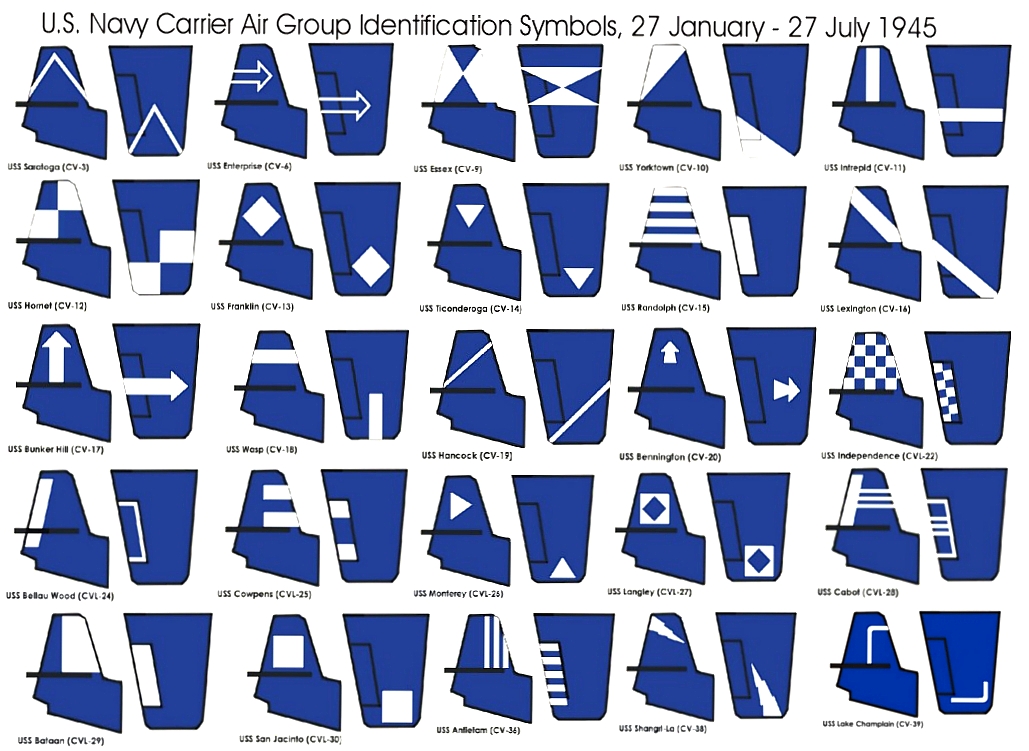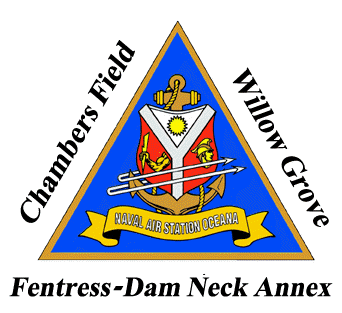|
CVW-7
Carrier Air Wing Seven (CVW-7) is a United States Navy aircraft carrier air wing based at Naval Air Station Oceana, Virginia. At the moment, CVW-7 is assigned to the USS George H. W. Bush. The tail code of aircraft assigned to CVW-7 is AG. Mission To conduct carrier air warfare operations and assist in the planning, control, coordination and integration of seven air wing squadrons in support of carrier air warfare including; Interception and destruction of enemy aircraft and missiles in all-weather conditions to establish and maintain local air superiority. All-weather offensive air-to-surface attacks, Detection, localization, and destruction of enemy ships and submarines to establish and maintain local sea control. Aerial photographic, sighting, and electronic intelligence for naval and joint operations. Airborne early warning service to fleet forces and shore warning nets. Airborne electronic countermeasures. In-flight refueling operations to extend the range and the endurance ... [...More Info...] [...Related Items...] OR: [Wikipedia] [Google] [Baidu] |
VFA-103
Strike Fighter Squadron 103 (VFA-103), nicknamed the Jolly Rogers, is an aviation unit of the United States Navy established in 1952. VFA-103 flies the F/A-18F Super Hornet and is based at Naval Air Station Oceana, Virginia (US). The squadron's radio callsign is ''Victory'' and it is assigned to Carrier Air Wing Seven. Insignia and nicknames The original VF-103 squadron insignia was a cloverleaf, and the aircraft tailfins had a horizontal yellow arrow outlined in black. Later a stylized aircraft darting through the leaf was added, along with a baseball bat. The baseball bat stemmed from an early skipper who often carried one with him. In 1991, VF-103's aircraft used the squadron insignia for tail-art, in place of the bold arrow. When the ''Sluggers'' became the ''Jolly Rogers'' following the disestablishment of VF-84 (1955-95), they adopted the famous white skull-and-crossbones. The ''Jolly Rogers'' have always displayed some of the most recognizable squadron markings in t ... [...More Info...] [...Related Items...] OR: [Wikipedia] [Google] [Baidu] |
VFA-143
Strike Fighter Squadron 143 (VFA-143), also known as the "Pukin Dogs," is a United States Navy strike fighter squadron based at Naval Air Station Oceana, Virginia. The Pukin Dogs are an operational fleet squadron and flying the F/A-18E Super Hornet. They are currently attached to Carrier Air Wing Seven and . They are currently at their homeport of NAS Oceana. Their radio callsign is Taproom. Insignia and nickname The squadron adopted its current insignia in 1953, a winged black griffon on a blue shield. The distinctive squadron name "Pukin' Dogs" came about when the squadron commander's wife saw the creature’s droopy head and gaping mouth design. She stated, in front of the squadron pilots, that it looked like a "pukin' dog." The pilots loved that, and the name stuck. In the aftermath of the Tailhook scandal in 1991, the squadron was forced to officially rename itself the "Dogs". This official banishment was widely ignored until Admiral John Mazach, Commander, Naval Air ... [...More Info...] [...Related Items...] OR: [Wikipedia] [Google] [Baidu] |
Carrier Air Wing
A carrier air wing (abbreviated CVW) is an operational naval aviation organization composed of several aircraft squadrons and detachments of various types of fixed-wing and rotary-wing aircraft. Organized, equipped and trained to conduct modern US Navy carrier air operations while embarked aboard aircraft carriers, the various squadrons in an air wing have different but complementary (and sometimes overlapping) missions, and provide most of the striking power and electronic warfare capabilities of a carrier battle group (CVBG). While the CVBG term is still used by other nations, the CVBG in US parlance is now known as a carrier strike group (CSG). Until 1963, Carrier Air Wings were known as Carrier Air Groups (CVGs). Carrier Air Wings are what the United States Air Force would call "composite" wings, and should not be confused with U.S. Navy ''Type'' Wings (such as Strike Fighter Wing Atlantic), which are primarily administrative and training commands composed of squadrons of ... [...More Info...] [...Related Items...] OR: [Wikipedia] [Google] [Baidu] |
NAS Oceana
Naval Air Station (NAS) Oceana or NAS Oceana is a United States Navy Naval Air Station located in Virginia Beach, Virginia. Nowadays, the station is located on 23.9 km2. It has total of 250 aircraft deployed and buildings valued at $800 million in plant replacement value. The total Navy community (which includes spouses) count for around 20.000 people. The base is under the jurisdiction of Navy Region Mid-Atlantic and is the headquarters of Strike Fighter Wing Atlantic and Carrier Air Wings 1, 3, 7 and 8. As home to all East Coast strike fighter jet squadrons, the Naval Air Station is classified as a master jet base. The airfield is known as Apollo Soucek Field, named after Lieutenant (later Admiral) Apollo Soucek, a Navy test pilot who set the global altitude record in 1930 by flying a Curtiss ''"Hawk"'' biplane to an altitude of 43,166 feet. Constructed in 1941, and officially commissioned in 1943, NAS Oceana has been home to carrier-based aircraft since its ince ... [...More Info...] [...Related Items...] OR: [Wikipedia] [Google] [Baidu] |
VAW-121
Carrier Airborne Early Warning Squadron 121 (VAW-121), also known as the "Bluetails", is an Airborne Early Warning (AEW) and Command and control (C2) squadron of the United States Navy, operating the E-2D Hawkeye. Established in 1967, the squadron is based at NAS Norfolk. It is currently assigned to Carrier Air Wing 7 and deploys aboard the aircraft carrier . Squadron History 1960s Along with VAW-122, VAW-123 and VAW-120, VAW-121 was created out of the "super squadron" VAW-12 on 1 April 1967. Until then, VAW-12 had deployed 4-plane detachments to accompany carrier air wings. 1970s Unlike its siblings, VAW-121 flew the E-1B Tracer, until the mid-1970s. This was due to the fact there were still carriers in the fleet that were not capable of handling for the larger E-2 Hawkeye, principally and the ''Essex''-class carriers. In 1977 VAW-121 made its first deployment as part of Carrier Air Wing Seven (CVW-7) on the newly commissioned . 1980s In 1980 VAW-121 deploy ... [...More Info...] [...Related Items...] OR: [Wikipedia] [Google] [Baidu] |
|
_insignia_1995.png)
_insignia_c1966.png)



_insignia%2C_2015.png)